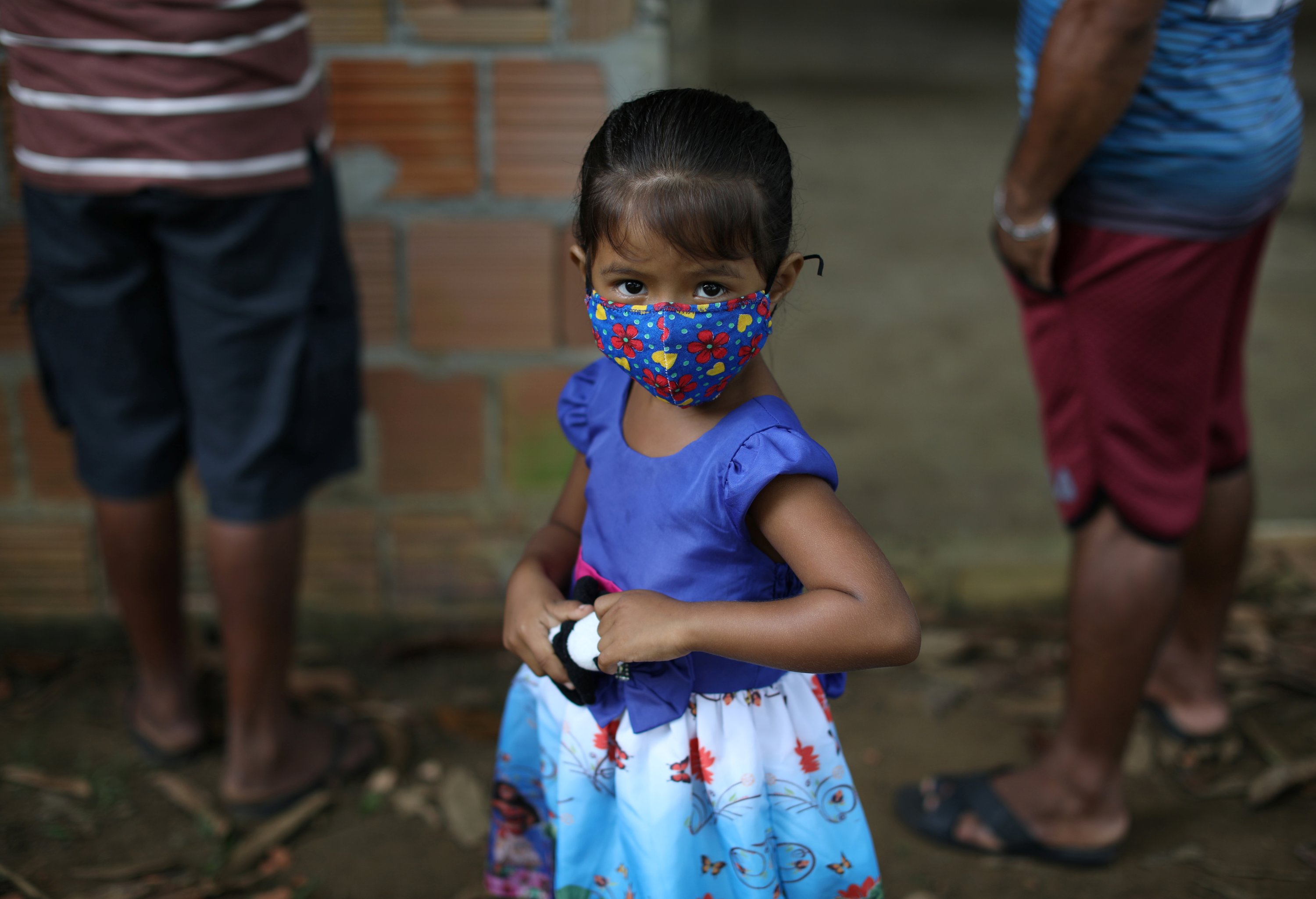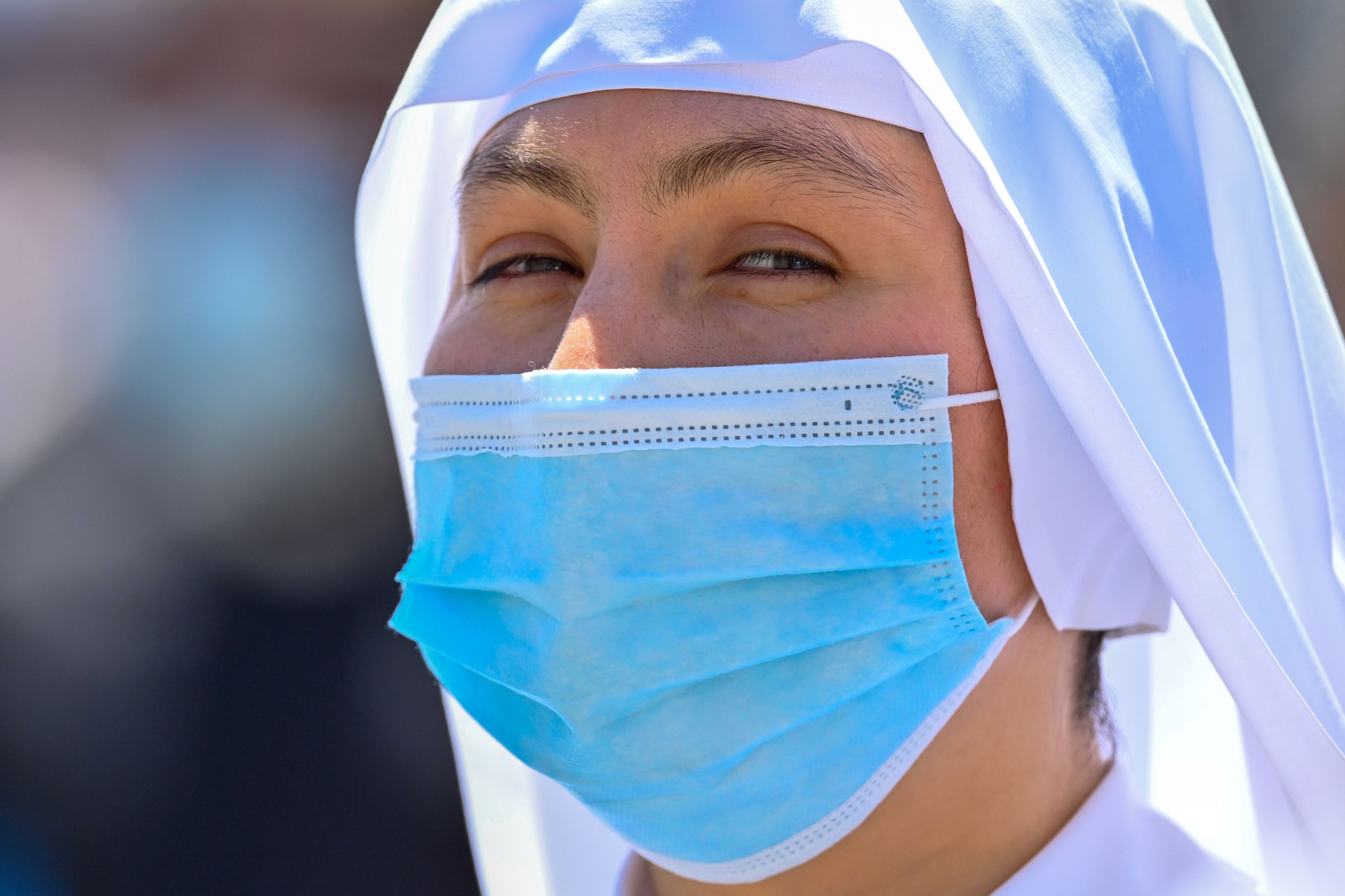© Turkuvaz Haberleşme ve Yayıncılık 2026
Wearing a mask over your nose and mouth seems like a logical precaution to take against a respiratory disease. But what’s the deal with experts telling us to wear eye protection to guard against the coronavirus?
While they may not seem like entry points, the eyes are another portal for viruses to enter your body, particularly viruses related to the respiratory system, according to American science journalist Jill U. Adams.
“Eyes have natural protective mechanisms such as tears to wash irritants away and immune mediators to combat threats that hang around. But viruses can take advantage of the eye in a couple of ways,” Adams wrote in The Washington Post.
“They can bind to proteins in the eye, which are similar to those in the lining of the nose and throat. Then they can enter (infect) cells and replicate themselves. Viruses can also travel with tears through tiny holes in the eyelids and down a duct that drains into the nose,” she explained.

The connection between the eyes and COVID-19 infections is far from clear, but studies have suggested that using eye protection reduces the risk of transmission.
A large study published in The Lancet journal at the beginning of June suggested that wearing face shields, goggles or glasses reduced the risk of infection to 6% from 16% – making you three times less likely to get COVID-19.
While droplets sprayed by an infected person who is talking, coughing or sneezing can be breathed in through the mouth and nose, they can also enter through your eyes. You can also become infected by touching your eyes after touching a surface contaminated by the virus.
Bacteria and viruses – such as influenza and adenovirus, both of which cause respiratory infections – are known to infect the eyes themselves, developing into conjunctivitis, commonly known as pink eye. While recorded occurrences of pink eye caused by the coronavirus have been few, the virus is capable of causing conjunctivitis. Conjunctivitis occurs when the mucous membranes of the eye become inflamed, and it is contagious, especially viral infections.
Ophthalmology specialist Dr. Rahmi Duman said some people who contract the coronavirus have listed eye swelling and redness as their initial symptom before developing respiratory symptoms.
At one coronavirus lab in China, nine out of 1,099 patients who tested positive for coronavirus developed conjunctivitis as their first symptom of infection, Duman told the Sabah newspaper.
"This means that ophthalmologists may be the first health workers to examine the infected patient," he noted, stressing that maximum hygiene should be maintained during visits to the eye doctor during this pandemic period. Patients exhibiting signs of conjunctivitis should be treated by staff wearing full protective gear, just as any COVID-19 patient would be treated.

So, what are some precautions you can take to reduce your risk of catching or spreading COVID-19 through your eyes? Here are some tips from ophthalmologists.
– Avoid rubbing your eyes.
Just as you should avoid touching your mouth or nose without washing your hands, you should also avoid touching your eyes, the American Academy of Ophthalmology says. If you can’t resist the urge to rub an itch or even push up your glasses, use a clean tissue instead of your hands. If you suffer from dry eyes, make sure to use eye drops before you go out to reduce itchiness. And if you have to touch your eyes, make sure to wash your hands thoroughly with soap and water both before and after touching your eyes.
– Consider wearing glasses when outside, especially if you are normally a contact-wearer.
Corrective lenses, sunglasses or face shields can add an extra layer of protection for your eyes against the virus traveling through the air. If you are in an especially high-risk situation, safety goggles provide the best protection.
Although there is no evidence that wearing contact lenses increases your risk of contracting COVID-19, contact-wearers touch their eyes more often than others, according to Dr. Sonal Tuli, a spokeswoman for the American Academy of Ophthalmology.
“Consider wearing glasses more often, especially if you tend to touch your eyes a lot when your contacts are in. Substituting glasses for lenses can decrease irritation and force you to pause before touching your eye,” Tuli said.

– Don’t share towels, pillowcases or eyedrops, and practice proper hygiene.
Both to avoid spreading COVID-19 and conjunctivitis, avoid sharing towels, pillowcases, cups, utensils or eye drops. Wash your hands frequently with soap and water, especially before and after touching your eyes.
It is also important to wash your face and eye area regularly with gentle soap and water, ophthalmologist Dr. Cafer Tanrıverdi of Medipol Mega Hospital advised. "Avoid wet wipes containing chemicals that can cause allergies or irritation," he said.
If you wear glasses, wipe them with disposable wipes rather than your reusable cleaning cloth to disinfect them, Tanrıverdi suggested.
And if you are going to continue wearing contacts, follow proper hygiene guidelines for using contact lenses. Tanrıverdi advises contact lens-wearers "to wash their hands very meticulously while wearing and removing contact lenses."
"During the pandemic period, we recommend using daily disposable lenses if possible. To our patients who use monthly lenses, we recommend that they pay more attention to hygiene than ever and change their lens solutions every day," he said.
– Self-quarantine and/or visit an eye doctor if you experience itching, burning or redness in your eyes.
Even if you show no other symptoms of COVID-19, you should behave as if you have the virus because conjunctivitis, too, is contagious.
“If you or someone around you has redness, itching, swelling or discharge in your eyes, be sure to follow the quarantine rules and contact a health center," Tanrıverdi said.
